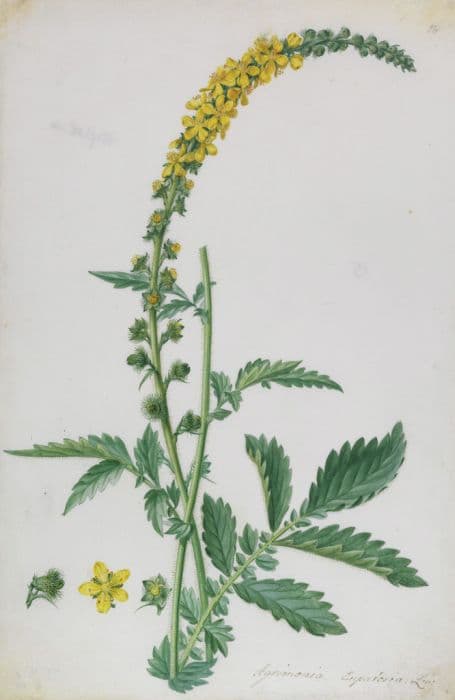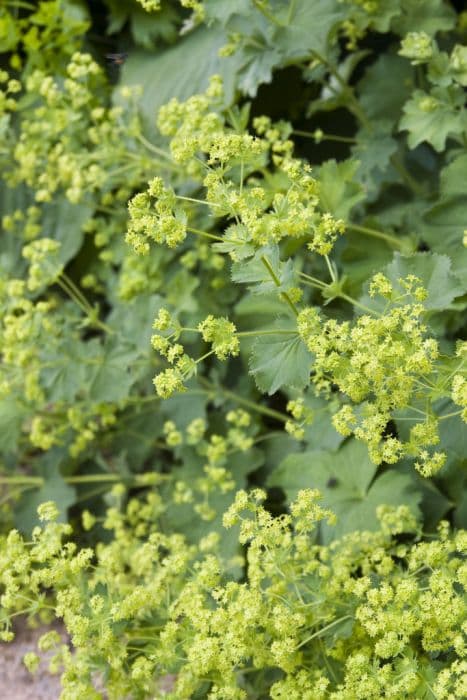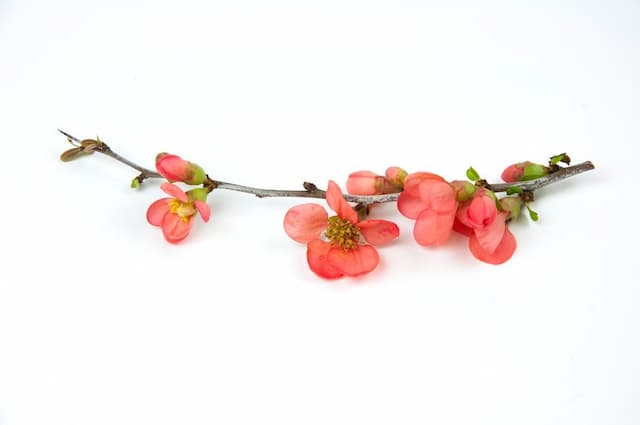Forrest's Rowan Sorbus forrestii

ABOUT
The plant known as Forrest's Rowan is a deciduous species that showcases a variety of appealing features throughout the year. During the spring, it produces clusters of small, white flowers that are fragrant and attract pollinators. Following the flowering phase, the plant bears small fruit that is commonly red or orange, providing a splash of vibrant color against the foliage. As the seasons change, the leaves of Forrest's Rowan undergo a transformation, offering a stunning autumnal display with shades ranging from bright yellow to rich red before they fall. The leaves of Forrest's Rowan are typically compound, which means each leaf is made up of multiple smaller leaflets arranged on a central stem, giving a feather-like appearance. This arrangement allows for a delicate texture within the plant's canopy. The bark of the tree is another notable characteristic, which, as the tree matures, can develop an interesting pattern that adds to the visual interest of the plant. Overall, Forrest's Rowan's ornamental appeal makes it a desirable choice for landscapes seeking seasonal variety and color.
About this plant
 Names
NamesFamily
Rosaceae
Synonyms
Forrest's Rowan, Forrest's Mountain Ash, Chinese Mountain Ash
Common names
Pyrus forrestii, Sorbus koehneana.
 Toxicity
ToxicityTo humans
Sorbus forrestii, commonly known as Forrest's rowan, does not have well-documented toxicity to humans. However, as with many plants in the Sorbus genus, it is generally advised to avoid ingesting parts of the plant without proper knowledge and preparation, as they may contain compounds that could be harmful if not processed correctly. There's no specific information suggesting that Forrest's rowan is highly toxic to humans, but it is always best to exercise caution and not consume parts of ornamental plants unless they are known to be edible.
To pets
Sorbus forrestii, more commonly known as Forrest's rowan, is not typically listed among plants that are highly toxic to pets such as dogs and cats. While there's limited specific information on this species' toxicity to pets, members of the Sorbus genus are generally not considered to be dangerously poisonous. Nonetheless, ingestion of non-food plants by pets can sometimes lead to gastrointestinal upset such as vomiting or diarrhea. Therefore, it is always a good practice to prevent pets from ingesting plants not intended for consumption to avoid potential digestive issues.
 Characteristics
CharacteristicsLife cycle
Perennials
Foliage type
Deciduous
Color of leaves
Green
Flower color
White
Height
20 feet (6 meters)
Spread
15 feet (4.5 meters)
Plant type
Tree
Hardiness zones
6
Native area
China
Benefits
 General Benefits
General Benefits- Ornamental Value: Sorbus forrestii is known for its aesthetic appeal due to its white or pink flowers, bright red fruits, and vibrant autumn foliage.
- Habitat Support: It provides food in the form of berries for birds and mammals, especially during colder months when food is scarce.
- Biodiversity Enhancement: Its presence supports various species of insects, which in turn attract birds and contribute to a diverse ecosystem.
- Erosion Control: The root system of Sorbus forrestii helps stabilize the soil, thereby preventing erosion, especially in hilly areas where it is commonly found.
- Shade Provision: It offers a pleasant shade in gardens and parks, making outdoor spaces more comfortable during sunny days.
 Medical Properties
Medical Properties- This plant is not used for medical purposes.
 Air-purifying Qualities
Air-purifying QualitiesThis plant is not specifically known for air purifying qualities.
 Other Uses
Other Uses- Sorbus forrestii, commonly known as Forrest's Rowan, can be used as a natural dye source; the bark and berries may provide dyes for fabrics or crafts.
- The wood of Forrest's Rowan is fine-grained and could be utilized in small woodworking projects, such as carving utensils or decorative objects.
- Young leaves from Forrest's Rowan can be employed in the preparation of leaf molds for casting decorative items or detailed garden stepping stones.
- The dried branches of Forrest's Rowan serve as support stakes in gardening, helping maintain the shape and growth direction of other plants.
- The berries of Forrest's Rowan are sometimes used as feed for certain livestock, especially when other food sources are scarce.
- Forrest's Rowan's spring blossoms can be collected for making natural potpourris or for use as a scented decoration in homes.
- In rural crafts, the flexible twigs of Forrest's Rowan can be woven to create small baskets or decorative pieces.
- Dense shrubberies of Forrest's Rowan may provide refuge and nesting habitats for various species of birds, contributing to biodiversity in gardens.
- Forrest's Rowan trees create captivating natural canopies that can be used to design living tunnels or archways in landscape gardens.
- The tree can act as a natural windbreak or privacy screen when planted in rows or clusters, due to its dense foliage.
Interesting Facts
 Feng Shui
Feng ShuiThe Chinese Mountain Ash is not used in Feng Shui practice.
 Zodiac Sign Compitability
Zodiac Sign CompitabilityThe Chinese Mountain Ash is not used in astrology practice.
 Plant Symbolism
Plant Symbolism- Endurance: Sorbus forrestii, commonly known as Forrest's Rowan, is part of the rowan family, which often symbolizes endurance due to their ability to survive in harsh climates and poor soils.
- Protection: Rowans are traditionally thought to ward off evil, and Forrest's Rowan shares this symbolism, being used in folklore to protect against witchcraft and enchantment.
- Wisdom: The Rowan tree is sometimes associated with wisdom, arising from its connection to the ancient Druids who regarded it as sacred.
- Life and Vitality: With its bright berries and resilient nature, Forrest's Rowan represents life force and vitality, celebrating the energy of nature and the cycle of life.
 Water
WaterFor the Chinese Mountain Ash, it is essential to maintain consistent moisture without over-saturating the soil. Watering should be done deeply and thoroughly, allowing the soil to slightly dry out between waterings. This could mean watering with approximately 2 to 3 gallons every week during the growing season, depending upon the weather conditions and soil type. During the winter, reduce the frequency as the plant's water requirements decrease. Ensure the plant has adequate drainage to prevent root rot.
 Light
LightChinese Mountain Ash thrives in full sunlight to partial shade conditions. To ensure healthy growth and abundant flowering, plant it where it can receive at least 6 hours of direct sunlight daily. Avoid overly shaded areas, as too little light can affect its growth and flowering potential.
 Temperature
TemperatureChinese Mountain Ash prefers moderate temperatures and can grow in zones 5 through 7, surviving minimum temperatures down to around -20 to -10 degrees Fahrenheit but not exceeding maximum temperatures of 85 degrees Fahrenheit. The ideal temperature range for this plant is between 60 and 75 degrees Fahrenheit to promote vigorous growth and flowering.
 Pruning
PruningPrune the Chinese Mountain Ash to maintain its shape and health, removing any dead, diseased, or crossing branches. Pruning should be done in late winter or early spring before new growth starts. Aim to thin out old wood to encourage new growth and better air circulation within the canopy. Occasionally, it may be necessary to cut back more extensively to rejuvenate an older tree.
 Cleaning
CleaningAs needed
 Soil
SoilThe Forrest's Rowan requires a well-draining loamy soil mix with a pH of about 6.0 to 7.5. Adding compost or leaf mold can improve fertility and structure. It is essential the soil is not waterlogged to prevent root rot.
 Repotting
RepottingForrest's Rowan, being a tree, is not often repotted as it's usually planted directly in the ground. If grown in a container, young trees may need repotting every two to three years to facilitate growth.
 Humidity & Misting
Humidity & MistingForrest's Rowan prefers moderate humidity levels consistent with outdoor conditions, as it is not a typical houseplant but a tree suited for gardens and parks.
 Suitable locations
Suitable locationsIndoor
Ensure ample light and room to grow; not ideal for indoor growth.
Outdoor
Plant in well-draining soil, full sun to partial shade, shelter from harsh winds.
Hardiness zone
6-9 USDA.
 Life cycle
Life cycleSorbus forrestii, commonly known as Forrest's Mountain Ash, begins its cycle with seed germination which occurs in a cold-moist stratification environment, mimicking winter conditions. Seedlings emerge in spring and develop into juvenile plants with pinnate leaves and a strong root system. As the plant matures, it enters the vegetative stage, growing taller and more branched, typically forming a shrubby tree. After several years, it reaches reproductive maturity and produces clusters of white flowers which, after pollination, develop into bright red berries by autumn. These berries are then dispersed by birds and other animals, allowing the cycle to continue as new seeds are spread into the environment. The plant, being deciduous, sheds its leaves annually in the fall and enters dormancy in winter, resuming growth in the following spring.
 Propogation
PropogationPropogation time
Spring-Early Summer
Propogation: The Chinese Mountain Ash (Sorbus forrestii) is typically propagated by seed, and the best time to sow is as soon as the seeds are ripe in a cold frame. The seeds should be cleaned of their flesh and mixed with a little moist sand, then placed in a plastic bag in the refrigerator for approximately three months to stratify. After stratification, sow the seeds in a seedbed or in individual pots. Keep in mind that seeds can take up to 18 months to germinate, and once germinated, the seedlings should be allowed to grow in the seeds trays for at least one season before being transplanted into the garden or larger pots. Seedlings can be sensitive to disturbance, so handle them with care when transplanting.









